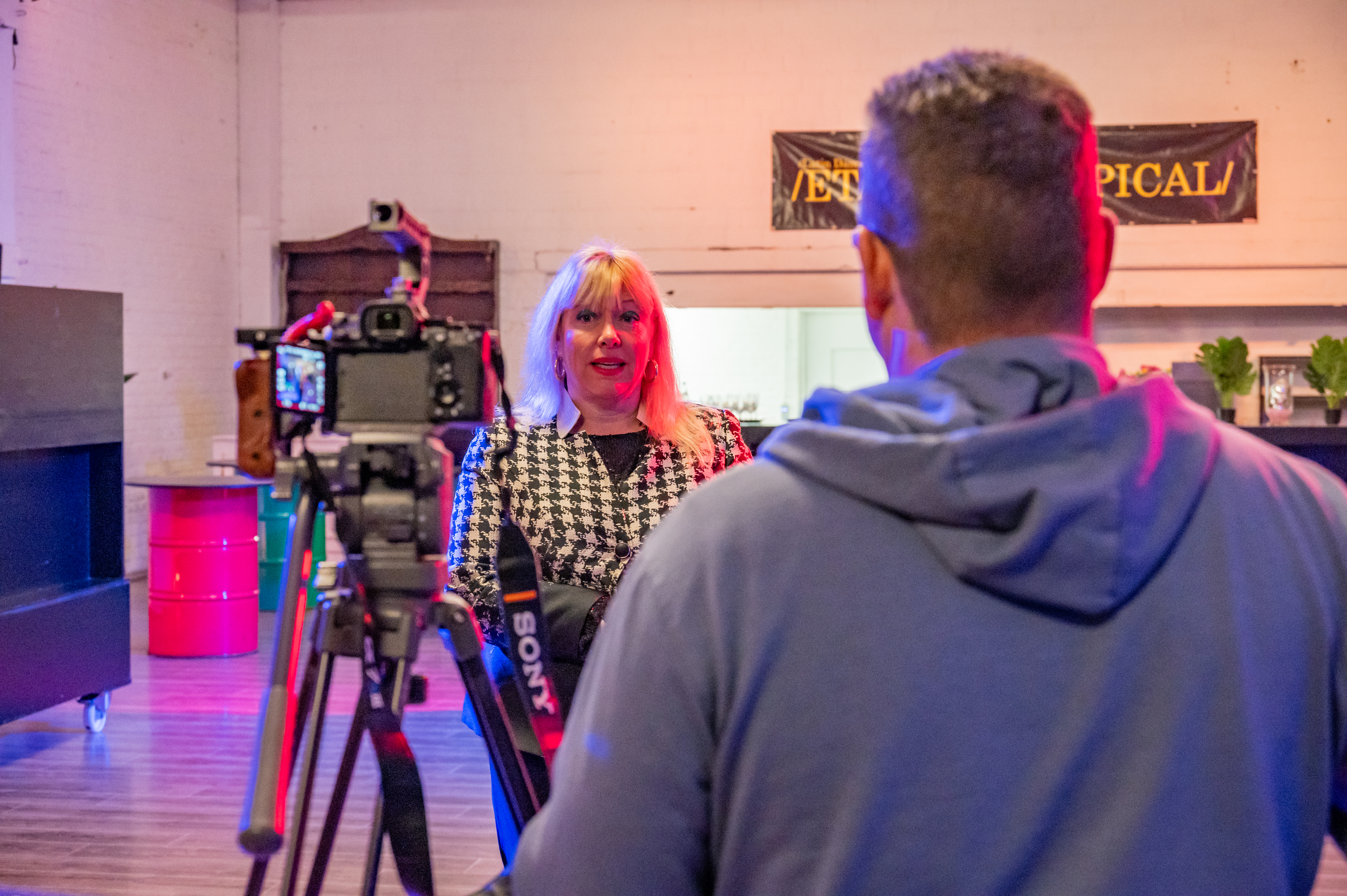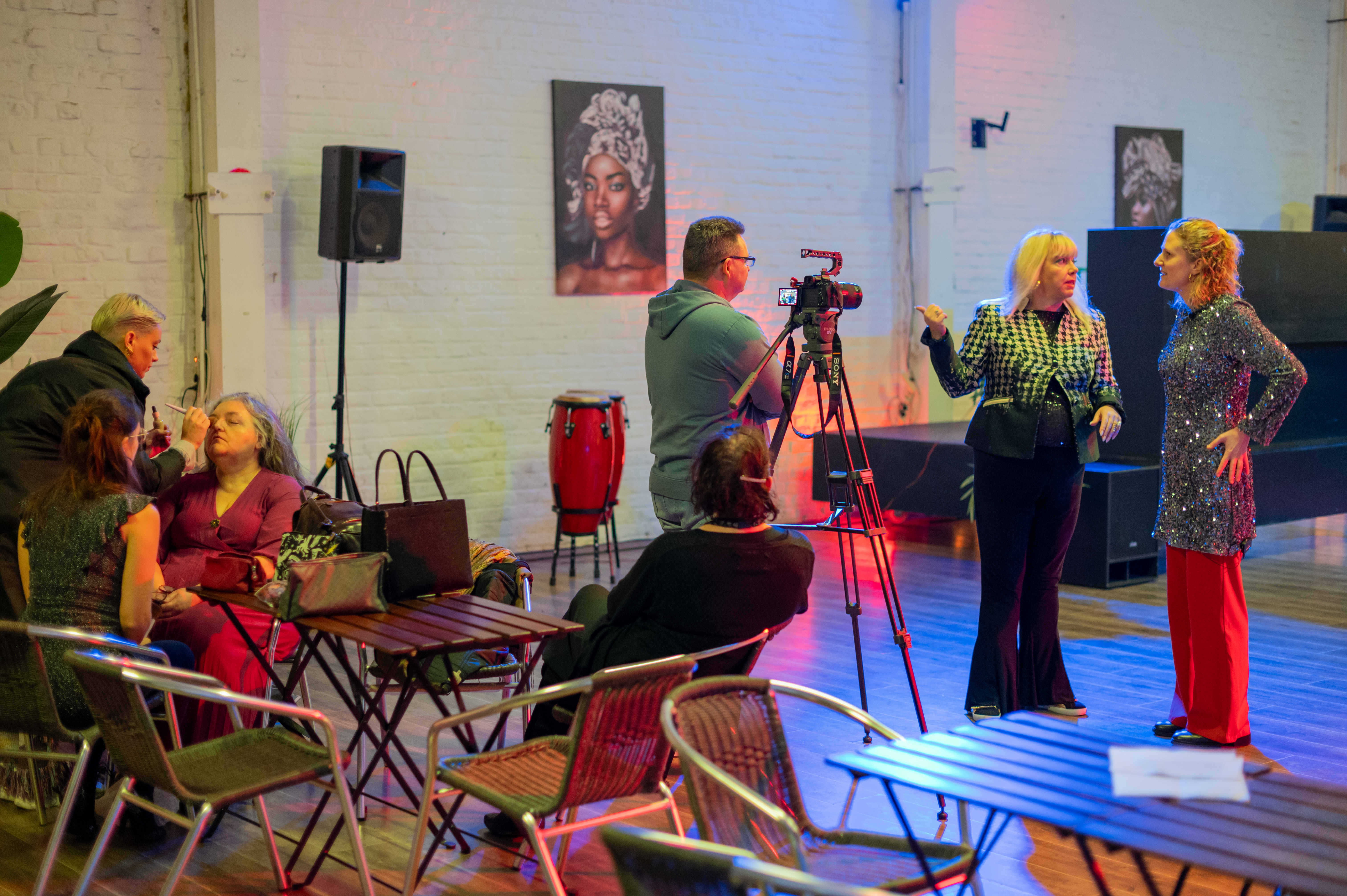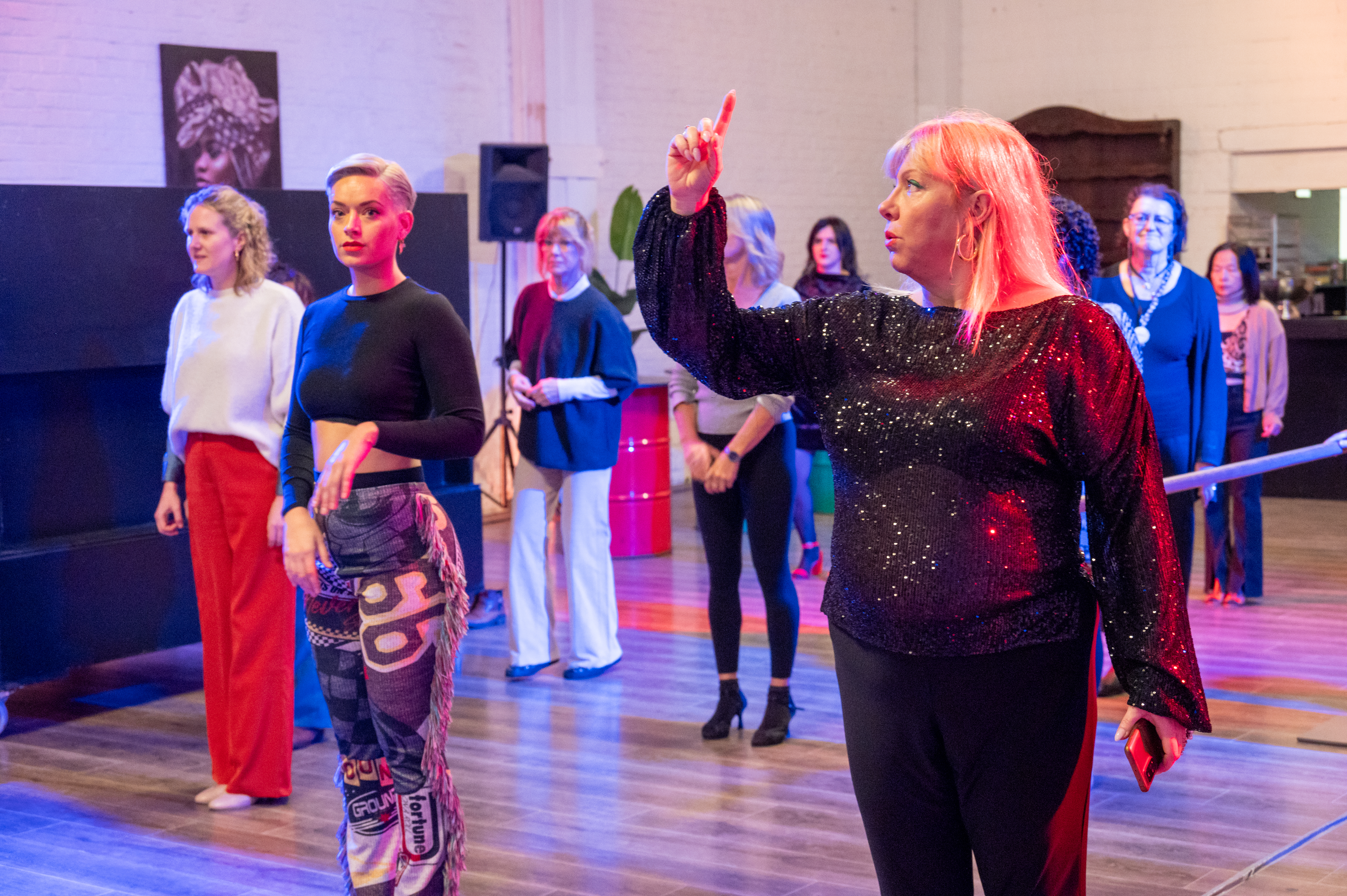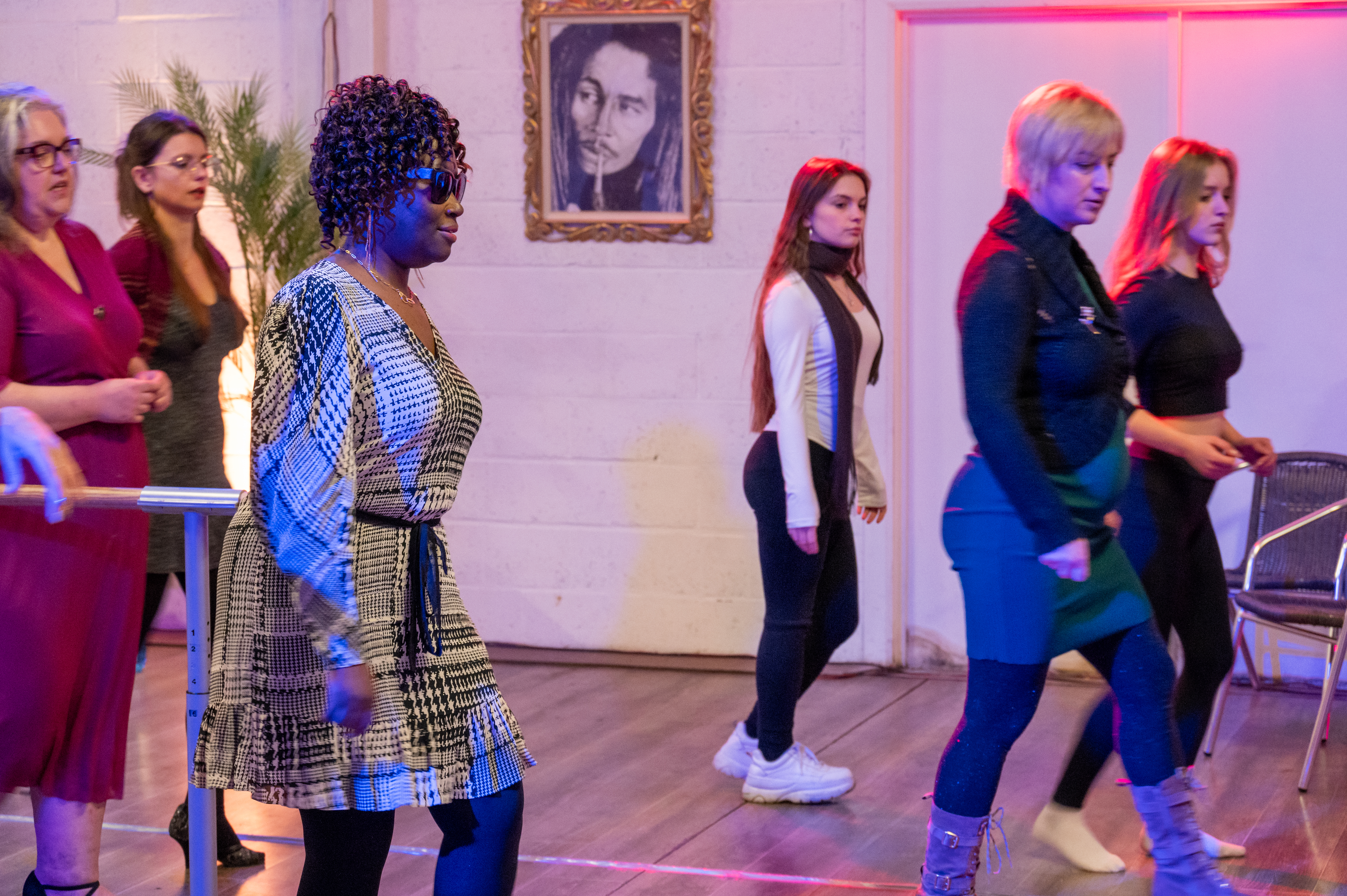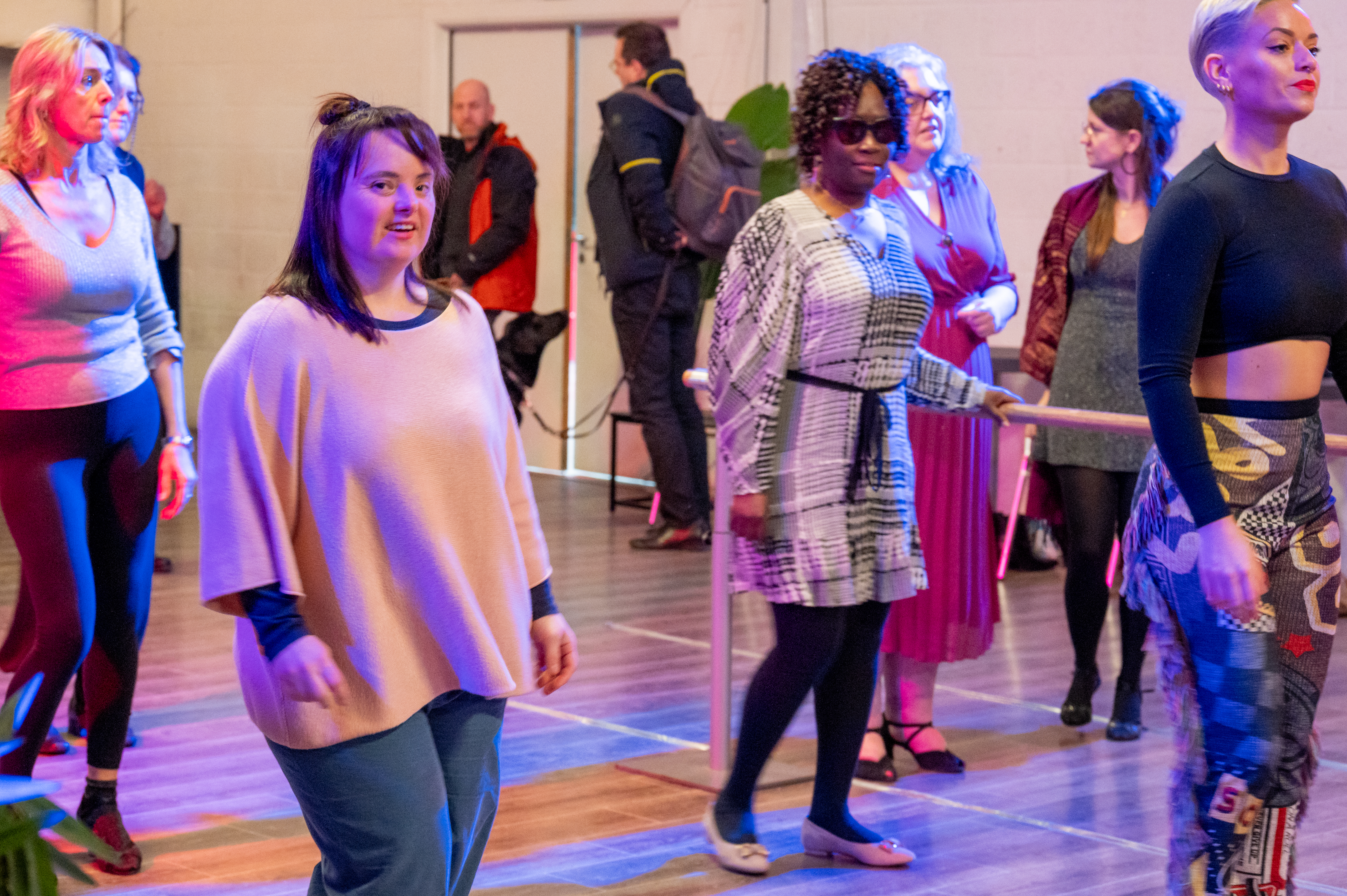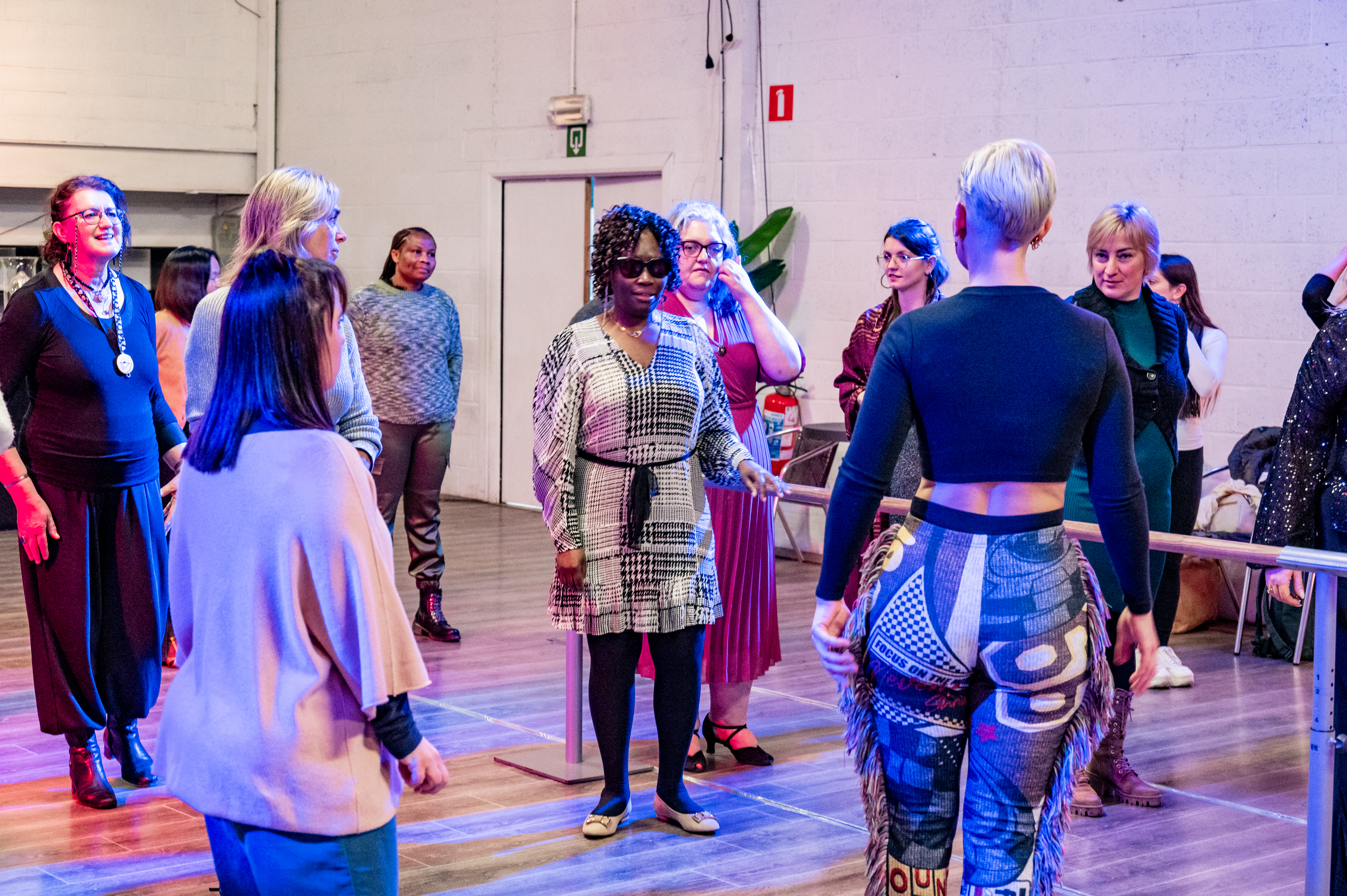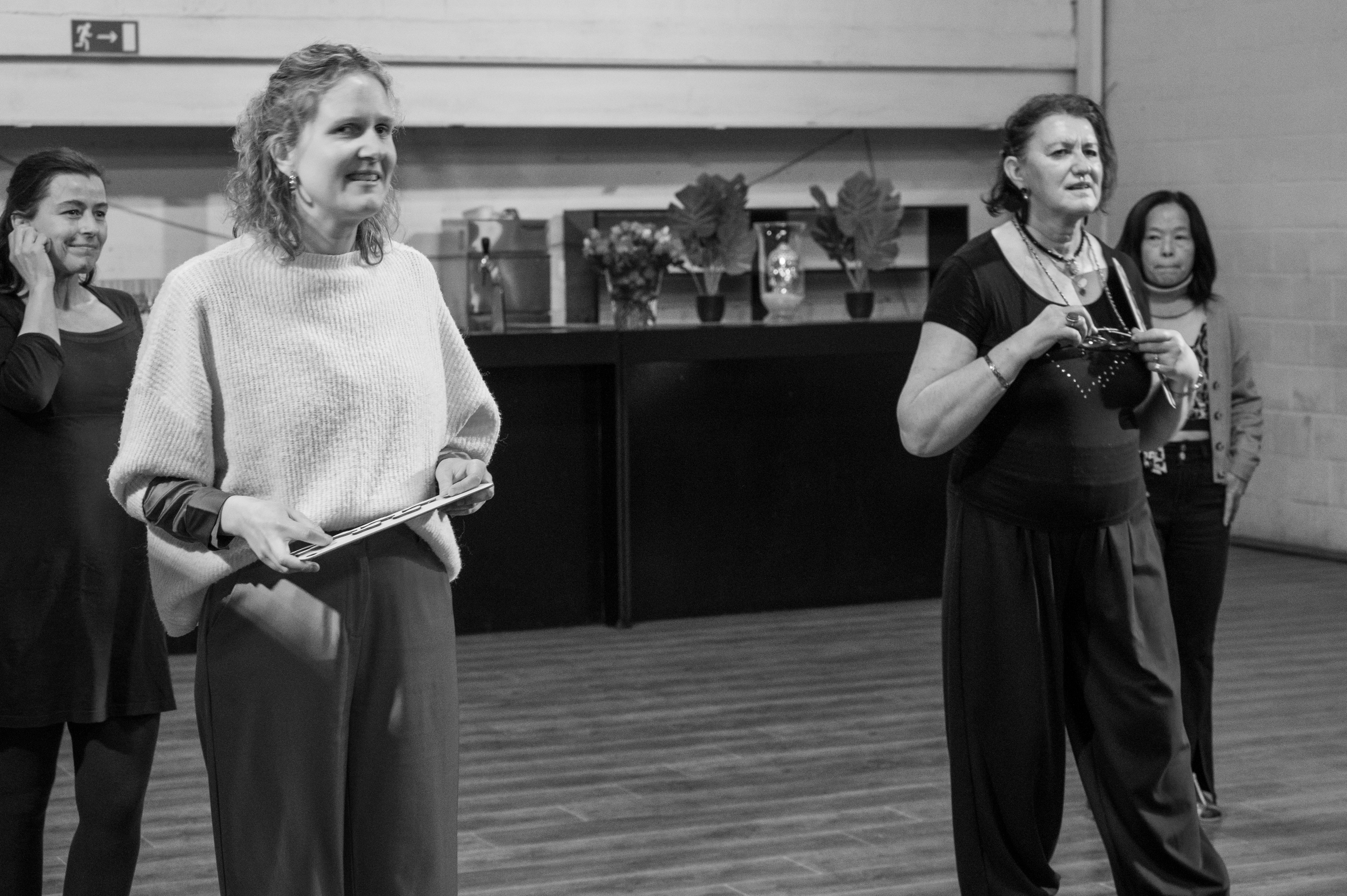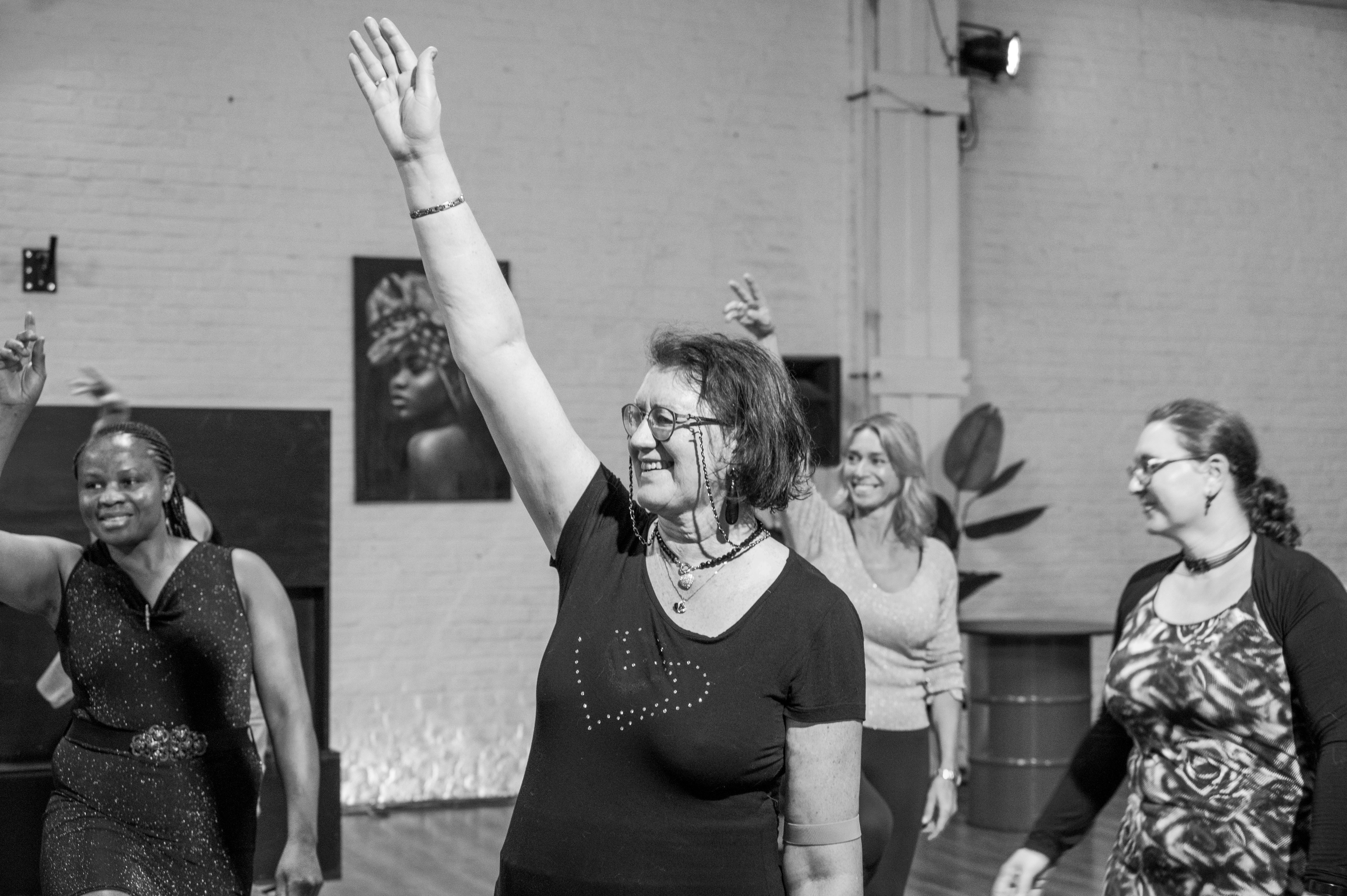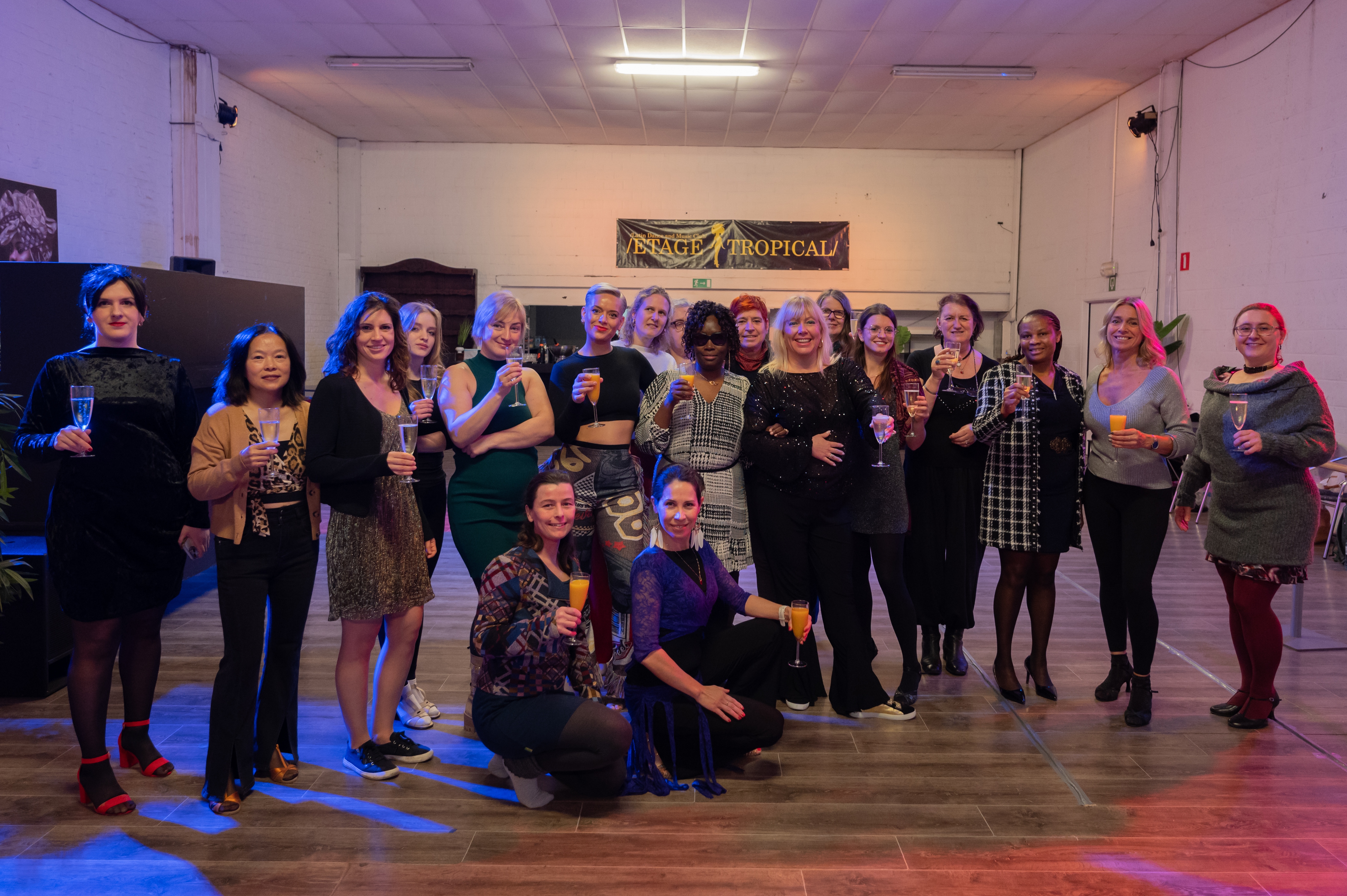The flow of the day: Ginga Choreo
On January 25th, the Ginga Choreo took center stage in a special dance moment where femininity, elegance, and inclusion came together. Ginga is the art of sensual, flowing hip movements – a form of expression that captures the essence of what it means to feel free and feminine. This technique, unique to followers in Kizomba dancing, originates from Angola and was reinvented in Paris by dancers with African roots. Fifteen years ago, DanceOrientation (then still Etage Tropical) played a key role in introducing and spreading this dance style in Belgium. Since then, we have continued to grow, and today we are especially proud of how we’ve made this dance accessible to everyone – including people with visual impairments.
The session on January 25th became a celebration of femininity in all its forms. We wanted to highlight the strength and beauty of every woman, with special attention to dancers who are blind or visually impaired. Because femininity knows no limits. At the same time, a Menstyling session took place, where male dancers worked on their personal style and expression. Both programs were separate from partner dancing and focused on individual training, allowing each participant to strengthen their own movement language. Among the attendees, we counted five dancers with visual impairments. Four women took part in the choreo in a group of about 20 to 25 women, while one blind male dancer joined the Menstyling session. In total, we have 24 members with visual impairments in our organization, but just like in any dance school, not everyone is always present.
To make this session accessible to everyone, we used our trusted support tools. With a rope on the floor attached using duct tape, we helped dancers orient themselves during movement. The ballet barre, carefully placed in the direction of the choreography, provided extra support and structure. In addition, we used tactile and visual tools like magnet boards and step cards – resources that make the learning process tangible, playful, and effective. The choreography was taught step-by-step in a clear formation, with the group dancing behind and next to one another. During the filming, we visually started from the feet, then showed the orientation line, followed by the ballet barre, and finally the group moving in harmony. Every element – from tape to board – was a fully-fledged dance tool that made a real difference.
We intentionally gave the floor to two women with visual impairments. Madina, a French-speaking woman with Burundian roots, has been passionately attending our classes for two years. Her elegant presence and warm connection to the school stood out, and her love for dance was visible in every movement. Nadine, also a loyal dancer, showed how easily she uses our support tools. She explained the magnet board and the step cards and demonstrated how these tools help her understand and feel the choreography, even without sight. Both women held the step cards during the dance, which the camera zoomed in on, followed by a panoramic view of the dancing group. The rope and barre also received the visual attention they deserved as quiet yet essential guides in the dance process.
The atmosphere that day was festive and heartwarming. All dancers dressed festively and stylishly, and a few blind ladies were carefully made up. We chose to film in our large dance hall, where we created a warm, intimate ambiance with colored spotlights – a setting that perfectly matched the theme of femininity and dance. The footage radiated energy and pride, with a modern flair that made the whole thing feel fresh and inspiring.
The realization of this project was only possible thanks to the support of the King Baudouin Foundation. Their trust not only gave us financial space but, more importantly, credibility. What we had been doing with conviction for years was finally seen and acknowledged. In the past, we were often ignored by institutions, although our target audience always supported us. We were seen as innovative, but that innovation also intimidated. Thanks to KBF, we were able to break through that wall. Today, we receive requests from everywhere and can barely keep up with the demand. With their support, we’ve been able to build and showcase our image – not just for sighted people, but also for the blind and visually impaired community. KBF gave us the chance to open doors that had previously remained closed and presented us in a way we never thought possible.
What matters most to us now is further spreading our knowledge and methodology. With the resources we received, we are working hard to digitize our teaching materials: videos, audio files, website, flyers, and courses are all getting a professional update. We want to make our tools available in multiple languages and continue investing in clear, structured learning materials that everyone can use. Our goal is simple: to reach, inform, and inspire as many people as possible – sighted or not, professional or beginner, local or international.
Image Description
Photo 1: Michèle stands ready in front of the camera, fully focused. The recording of her interview is about to start — you can feel the excitement and tension in the air.
Photo 2: With flair, Michèle gives instructions to Annick while the cameraman tries to focus on both women. On the left side of the frame, Laure gives Nadine a final make-up touch-up. Lara watches attentively. A beautiful example of teamwork behind the scenes.
Photo 3: Michèle passes on her instructions to the group.
Photo 4: Side view of a group of powerful women, ready to repeat the choreography. Michèle gives the starting signal with her right arm raised high. Lara catches the camera with a direct gaze. Annick and Sonia, both visually impaired, keep their focus straight ahead. The Deaf lady also looks directly into the lens. In the background, a ballet barre — a subtle nod to the elegance of dance.
Photo 5: From another angle, the women dance the choreography with passion. Madina (blind) radiates confidence in the center, while Nadine (blind) moves along with Laure in the background. A young girl with an intellectual disability beams from ear to ear, while the sighted young women dance with focus. In the background, Manuel (blind) enters with his loyal guide dog, followed by Youri. Pure inclusion in motion.
Photo 6: An intimate group moment: Lara stands with her back to the camera, as if connecting the group. In the heart of the circle, Madina shines — a moment of strength, connection, and unity.
Photo 7: Sonja and Annick, both visually impaired, keep their gaze intensely focused. In the background, two sighted women follow the scene with attention. Determination and focus dominate.
Photo 8: Sonja enthusiastically throws her right arm into the air and smiles broadly. The women around her are swept up in her joy and laugh along spontaneously. A powerful image of joy and connection.
Photo 9: A festive group photo of the Ginga ladies — radiant, proud, and with a glass of bubbles in hand. An ode to diversity, femininity, and dancing together, no matter the limitations. Cheers to connection & celebration!
